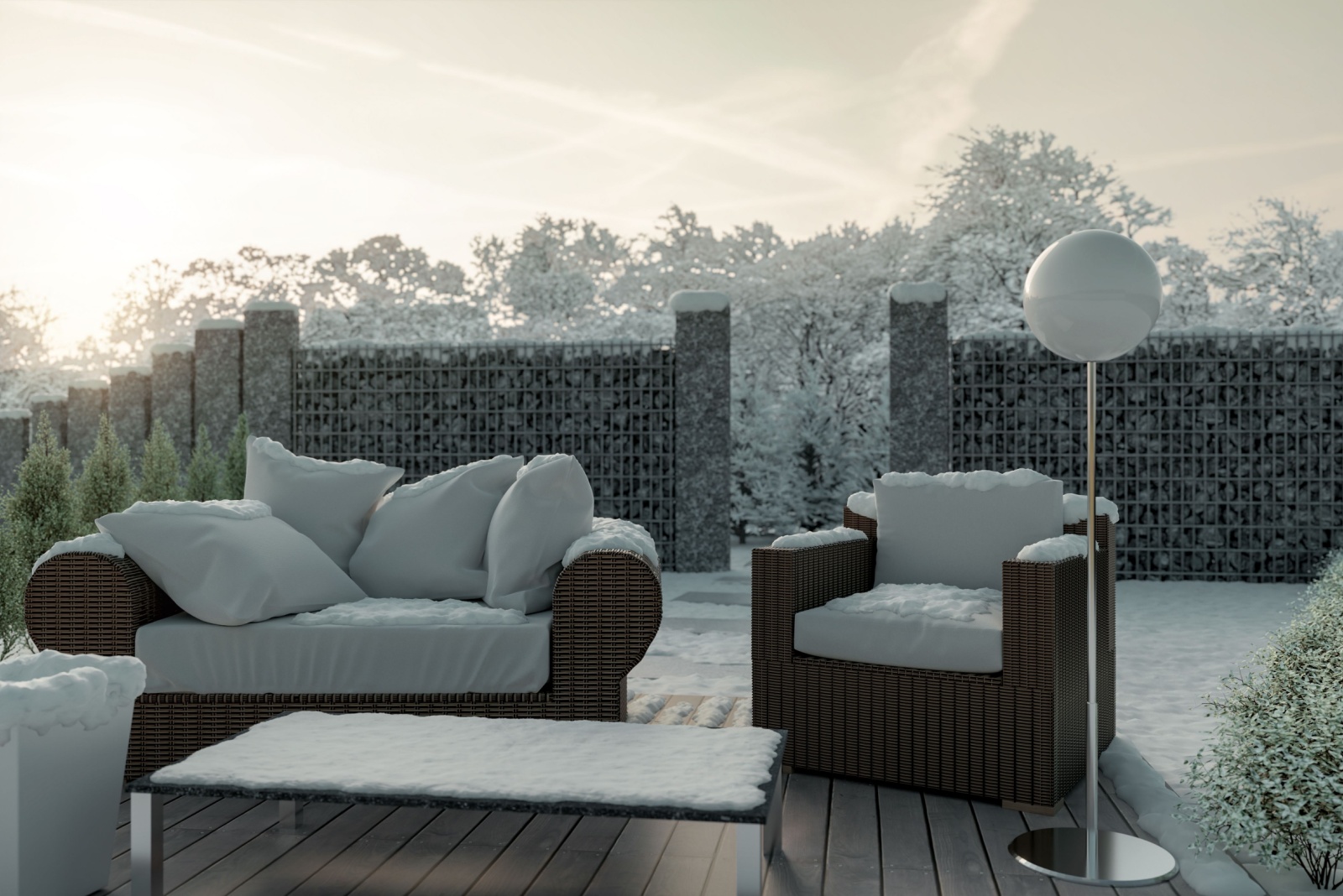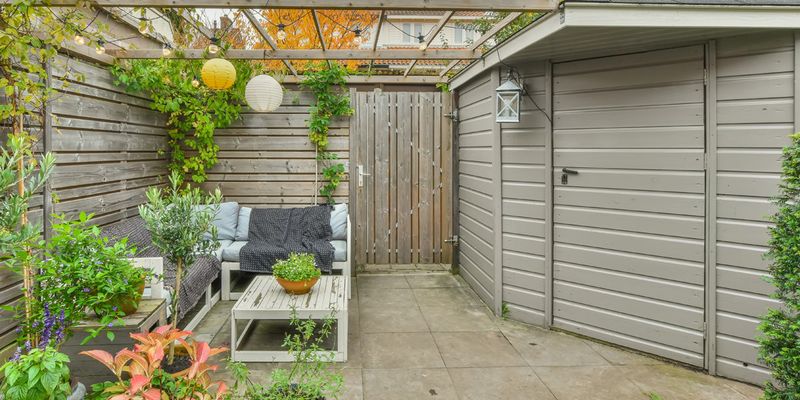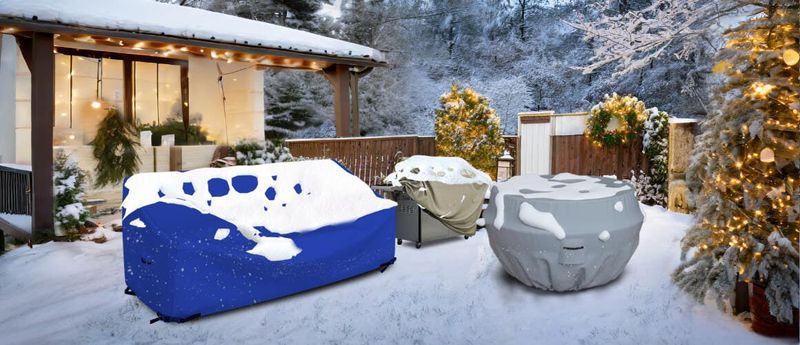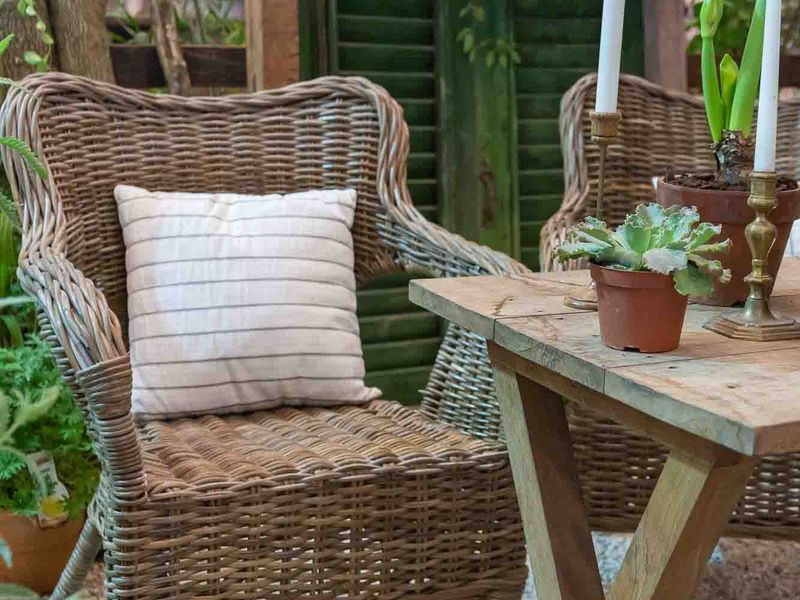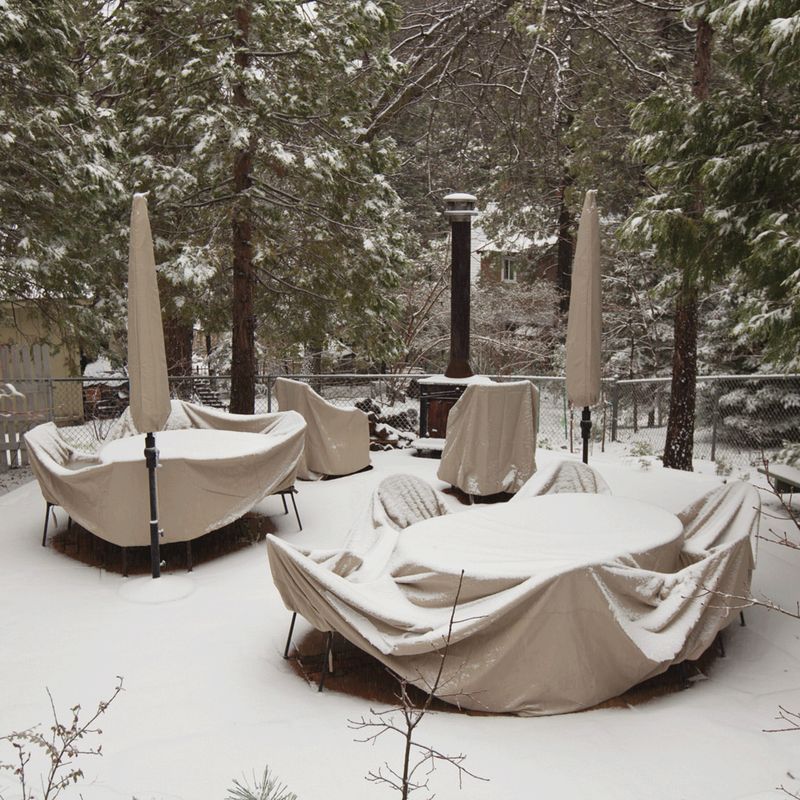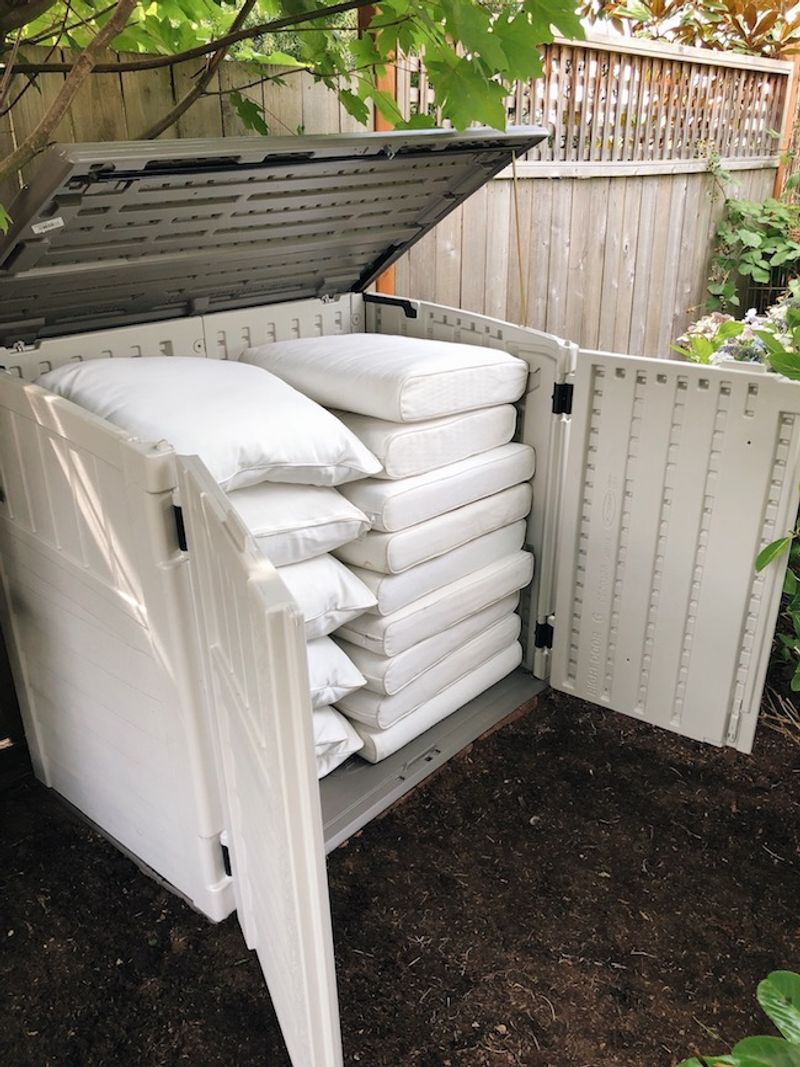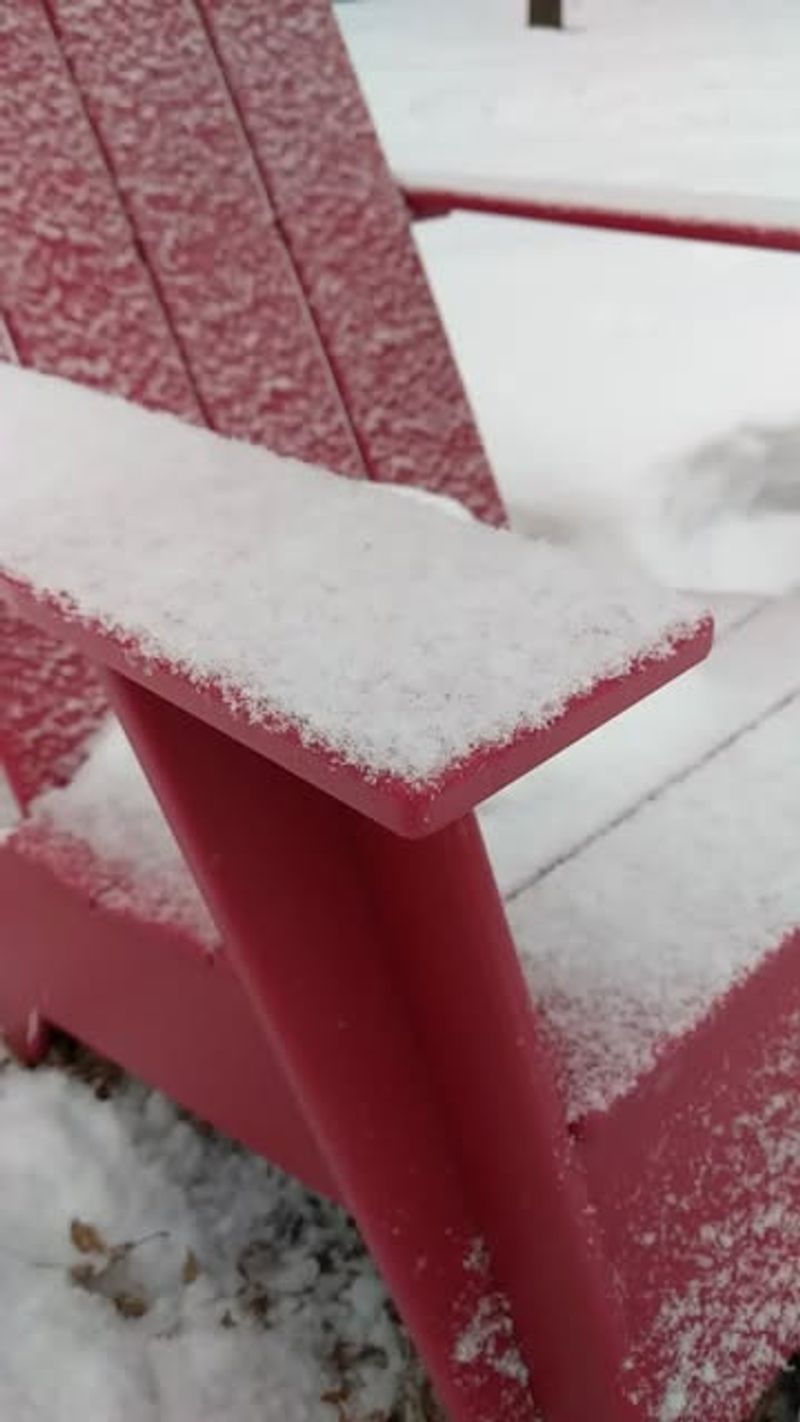North Dakota winters are notoriously harsh, with temperatures plummeting well below freezing and snowfall measuring in feet rather than inches. These extreme conditions can wreak havoc on outdoor furniture, causing cracking, warping, and premature aging that shortens their lifespan significantly.
After living through several brutal winters here, I’ve learned that proper protection isn’t just recommended—it’s essential. Last year, my neighbor skipped covering his wooden patio set, and by spring, he was shopping for replacements while my protected pieces remained intact.
With a bit of preparation and the right techniques, you can ensure your outdoor investments survive until spring. Here are seven proven methods to shield your patio furniture from North Dakota’s unforgiving winter elements.
1. Store Furniture In A Covered Space
The garage became my furniture’s winter sanctuary after I lost two chairs to snow damage. Moving pieces indoors provides the ultimate protection against moisture, freezing temperatures, and heavy snow loads.
Don’t have enough garage space? Consider renting a small storage unit for the season. Many North Dakota facilities offer winter-only contracts at reasonable rates, knowing how common this need is.
Even a covered porch can help, though it’s not as effective as fully enclosed storage. The key is keeping furniture elevated off concrete floors, which can transfer cold and moisture.
2. Invest In Heavy-Duty Furniture Covers
Not all covers are created equal for North Dakota conditions. I learned this lesson when my bargain covers shredded mid-January during a blizzard. Look for covers specifically designed for extreme cold with reinforced seams and wind straps.
Materials matter tremendously. The best covers combine water-resistance with breathability to prevent moisture buildup underneath. My personal recommendation: covers with UV protection that won’t crack in subzero temperatures.
Secure covers properly with bungee cords or built-in straps. The prairie winds can easily turn an unsecured cover into a neighborhood kite during winter storms.
3. Apply Protective Sealants Before Winter
Fall became my annual furniture maintenance time after seeing how much longer treated pieces lasted. Wood furniture benefits tremendously from a fresh coat of sealant applied before the first freeze hits.
Metal pieces need attention too. Rust-inhibiting sprays create a protective barrier against moisture that causes corrosion. I apply these in September when temperatures are still workable but winter is approaching.
Even plastic and resin furniture last longer with UV protectant sprays. These prevent the brittleness that leads to cracking when temperatures fluctuate between freezing nights and occasional sunny winter days.
4. Create Windbreaks With Strategic Landscaping
My evergreen shrubs serve double duty—they look beautiful year-round and shield my patio from the worst winter winds. Strategically planted trees and shrubs can dramatically reduce wind exposure that accelerates furniture deterioration.
Temporary windscreens work well too. I’ve used lattice panels anchored in large planters to create seasonal barriers around my seating area. They’re easily removed come spring.
Even snow fencing can help. Installing it 15-20 feet from your patio area creates a drift zone that captures snow before it buries your furniture, reducing moisture exposure dramatically.
5. Elevate Furniture Off The Ground
Wooden blocks became my furniture’s best friends after I noticed how ground contact accelerated deterioration. Raising furniture even a few inches prevents it from sitting in melting snow and ice puddles during those occasional winter thaws.
For wooden furniture, this elevation prevents moisture wicking from the ground. My neighbors thought I was being overly cautious until they saw how their ground-contact furniture developed rot at connection points.
Concrete patios pose special problems in North Dakota winters. The freeze-thaw cycle can trap moisture between furniture legs and the surface, causing damage to both. Small risers solve this problem effectively.
6. Remove Cushions And Fabric Accessories
Fabric elements simply don’t belong in North Dakota winters. After finding mold on cushions I’d left covered but outdoors, I now store all fabric items indoors regardless of what I do with the furniture frames.
Before storage, I thoroughly clean cushions with mild soap and water. This prevents any existing dirt or organic matter from becoming permanent stains during the off-season.
Vacuum-sealed storage bags have been game-changers for me. They compress bulky cushions to manageable sizes and keep them protected from moisture and pests during our long winters.
7. Schedule Mid-Winter Maintenance Checks
January thaws became my furniture inspection opportunities after discovering that early intervention prevents major spring problems. During occasional warmer days, I check for snow accumulation on covers and brush it off to prevent moisture damage.
I also verify that covers remain properly secured. Our famous North Dakota winds can loosen even well-tied covers, exposing portions of furniture to the elements.
Looking for ice buildup is crucial too. Ice can form in furniture joints and expand, causing splits in wood or bends in metal. Carefully removing it during warmer periods prevents this progressive damage throughout winter.

